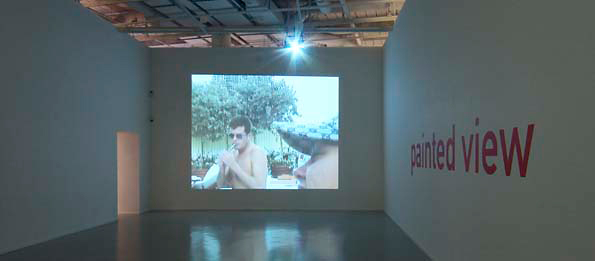In one part of the film sequence Maria Friberg lets her sister use a so-called spy camera by the pool side at a luxury hotel in Miami Beach. The other sequence shows the sister in front of the mirror. When Maria for the first time chooses to film a woman, she chooses a hostess – that is, a professional in socially-geared femininity. Through her sister, the artist gazes into another world.
At the centre is the gaze, this refined instrument that we use more or less consciously to interact in all social situations. The gaze as creator of meaning has been a focal point of art throughout the ages – the viewer’s gaze, the gaze of the portrayed, and, not to forget, the gaze of the artist. The gaze has its own art history, and in the 20th century seeing grew even more complex as new forms of visuality emerged. After all, films and videos are created through the “gaze” of the camera lens. Film seduces the modern eye.
Maria Friberg masters our contemporary visual stimuli completely, and has a unique feel for the inherent rhythm of the image flow and for the tempi in which we read images. In her latest works, Maria Friberg has dealt with peripheral seeing, she seeks the unusual angle, a feeling of being ‘out of focus’. In painted view she playfully challenges the classical male voyeurist gaze. Who is looking at whom?
Maria Friberg’s imagery has, until recently, been peopled by men. In her explorations of masculinity we encounter contemporary man – sometimes appearing as a timeless archetype in a suit, at other times nakedly exposed to a vast natural landscape. The works concern male identity, leadership, control and power, but are also about being exposed and vulnerable.
confront me back from 1997 shows us a man writhing between two car seats. His suit and the car upholstery blend into an impeccable shade of grey. In another work from 1998 the artist homes in on a row of men’s legs in black shoes underneath a table – a sharp commentary on the male dominance of boardrooms. The same year, she used photos of guys in suits to “prop up” a neo-modernist building, like the atlases of classical Greek mythology. In the almost there series from 2000 men in black suits float on the surface of a turquoise pool.
Maria Friberg has been observing men for a long time. But she has also studied how they, in turn, observe the world around them. The film no time to fall from 2001 shows USA’s current president speaking to the Congress, and Maria Friberg isolates his well-balanced pauses. This is about rhetoric. By eliminating the slogans she reveals the milliseconds when the leader of the superpower allows his gaze to rest on the auditorium, anxiously awaiting their applause. Like me, many of you have probably wondered when women would make their appearance in Maria Friberg’s works. painted view is one answer.
Cecilia Widenheim, Curator Moderna Museet
